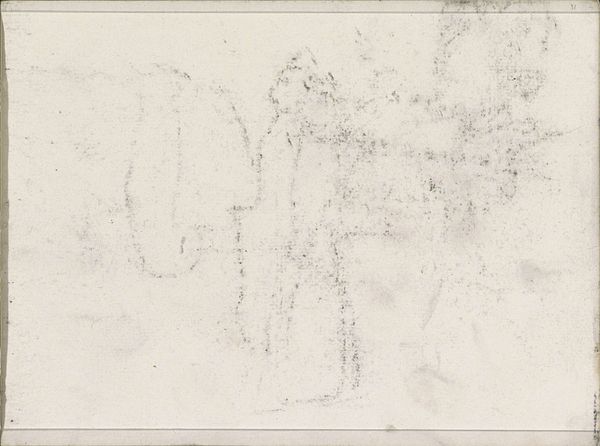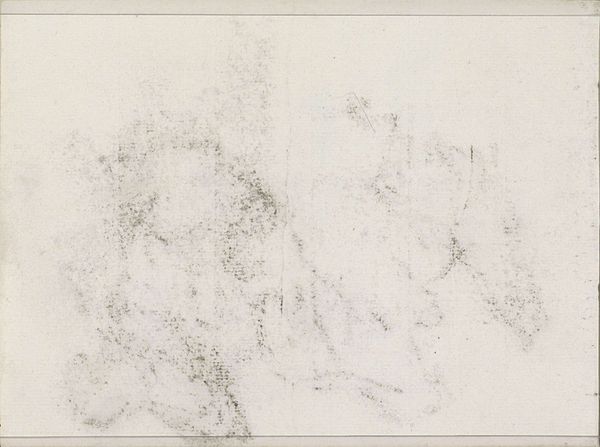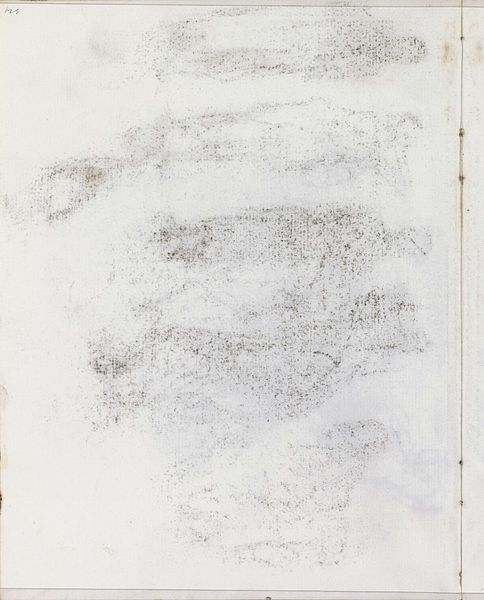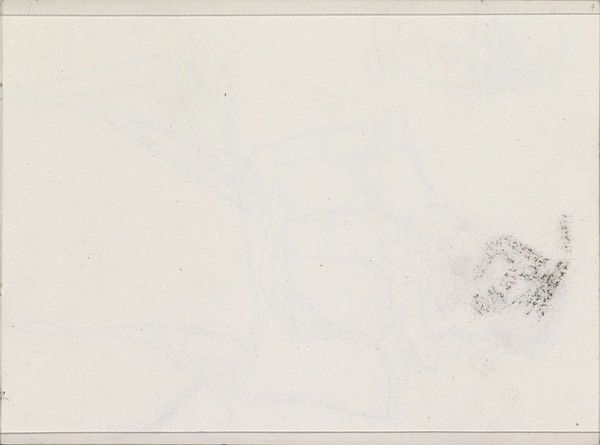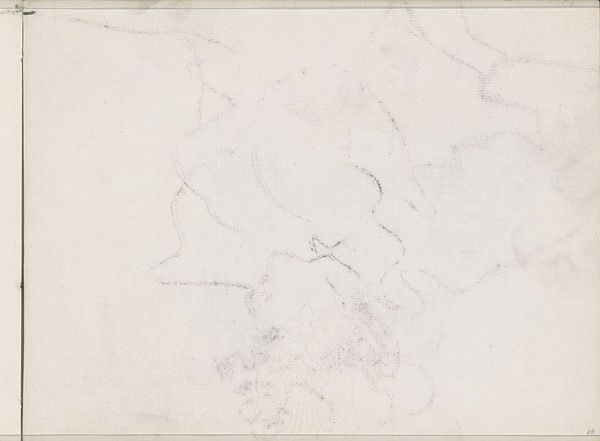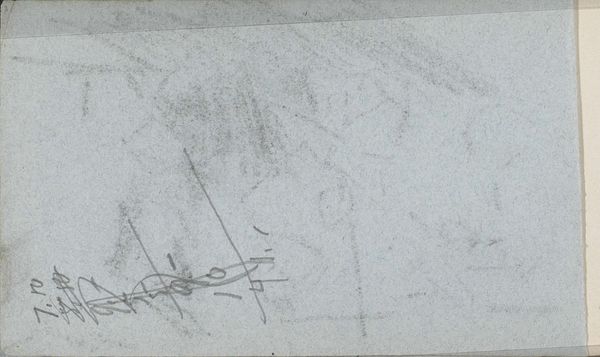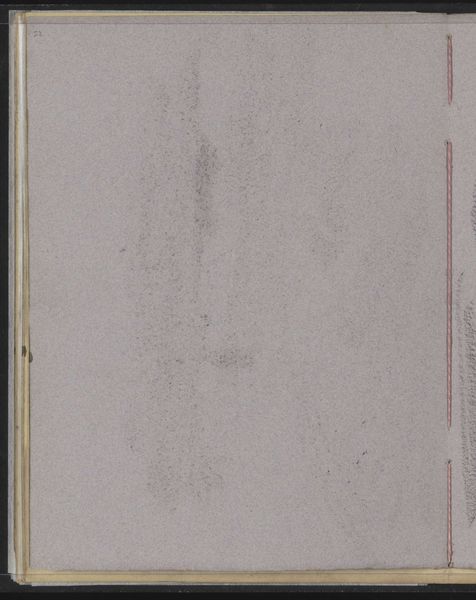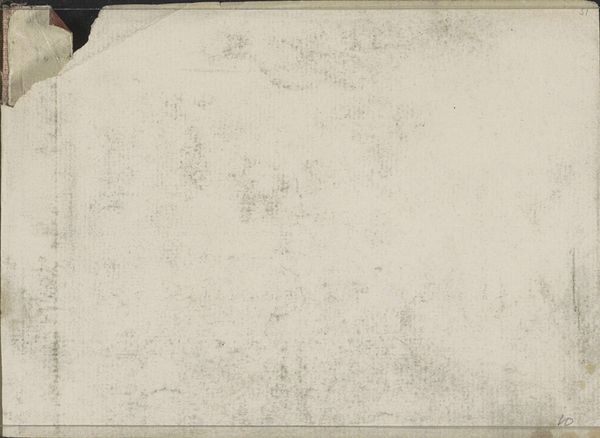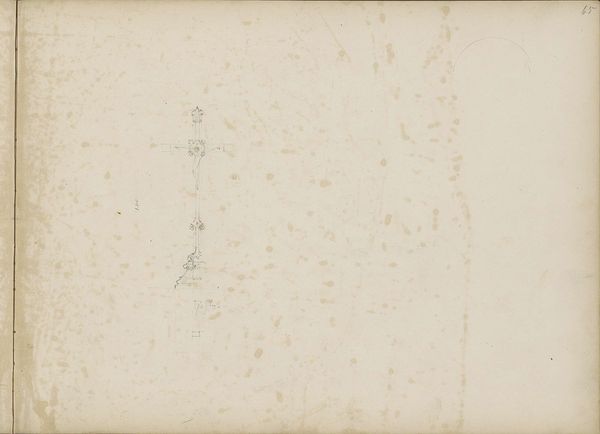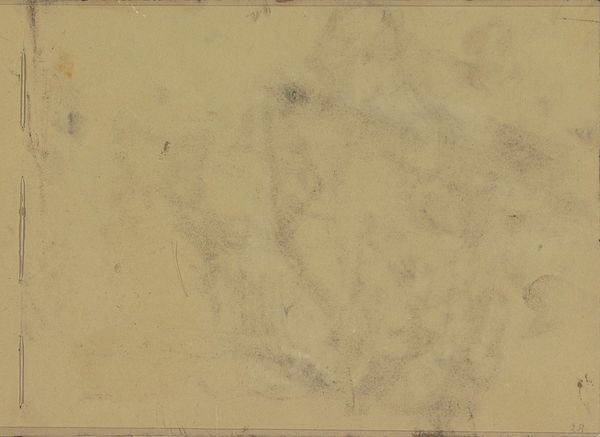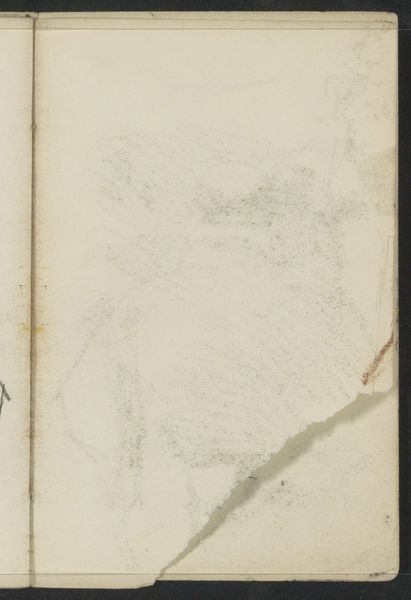
Copyright: Rijks Museum: Open Domain
Curator: At first glance, it looks like a ghost. Editor: That's apt. Here we have a piece titled "Abklatsch van de krijttekening op blad 6 verso," which translates to "Rubbing of the chalk drawing on sheet 6 verso." It's by Isaac Israels, dating from around 1875 to 1934. You see the work rendered in graphite and pastel on paper. Curator: It seems accidental, a residue. The process becomes the point. This rubbing, this transfer... what were Israels' other drawings on either side of this sheet? Editor: Ah, there we hit a rich vein. Considering its likely placement in a sketchbook, it acts almost as a palimpsest, or perhaps as indexical as a Shroud. One thinks of the labor behind such a fleeting composition, and it feels incredibly intimate, maybe even private. Did it reflect Israels' world in some way? What are we meant to see? What identities or events are layered within? Curator: It's about the value, or perhaps *de*valuation of skill, right? Israels could clearly execute highly skilled work, yet he is letting a process do some of the work for him. How did such techniques and experiments fit within his larger studio practice? What choices of material led to the visual qualities we're presented with? Editor: Precisely. Given the timeframe, the late 19th and early 20th centuries, we also have to view Israels in terms of the societal context, which witnessed rapid industrialization and shifting class structures. Perhaps a comment about social labor can be made through it; a fleeting image or imprint like a smudge. Is the 'art' the drawing, the process, or what's created accidentally as a result? Curator: Yes, but how does Israels see himself *within* it? It does provoke questions about intention, chance, and control, though. Editor: Absolutely. In the broader sweep of Israels' oeuvre and era, it provokes discussions of who or what such accidents represent outside the studio. How much could the contemporary audience see and comprehend regarding gender and social expectations of labor? Curator: I am grateful it is still viewable as such in the 21st Century! Editor: As am I; a quiet sketch that prompts dialogue between past and present.
Comments
No comments
Be the first to comment and join the conversation on the ultimate creative platform.
